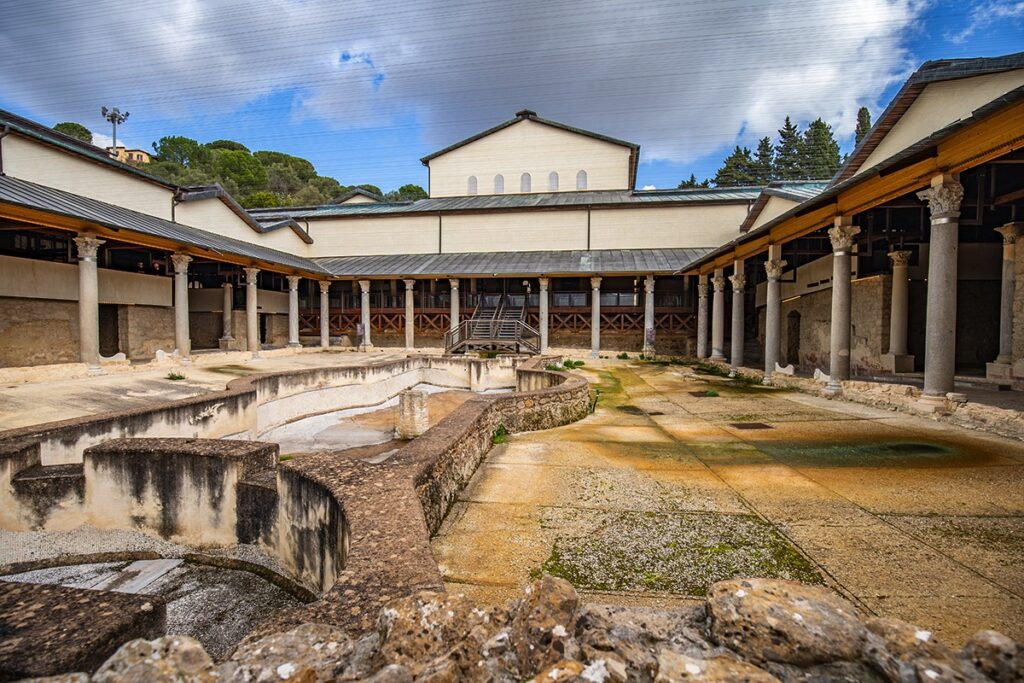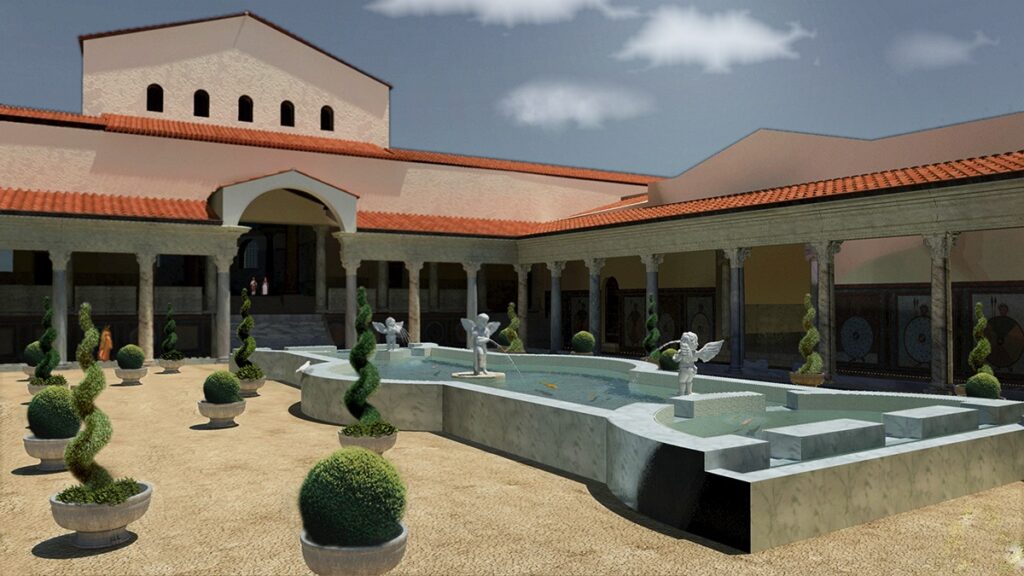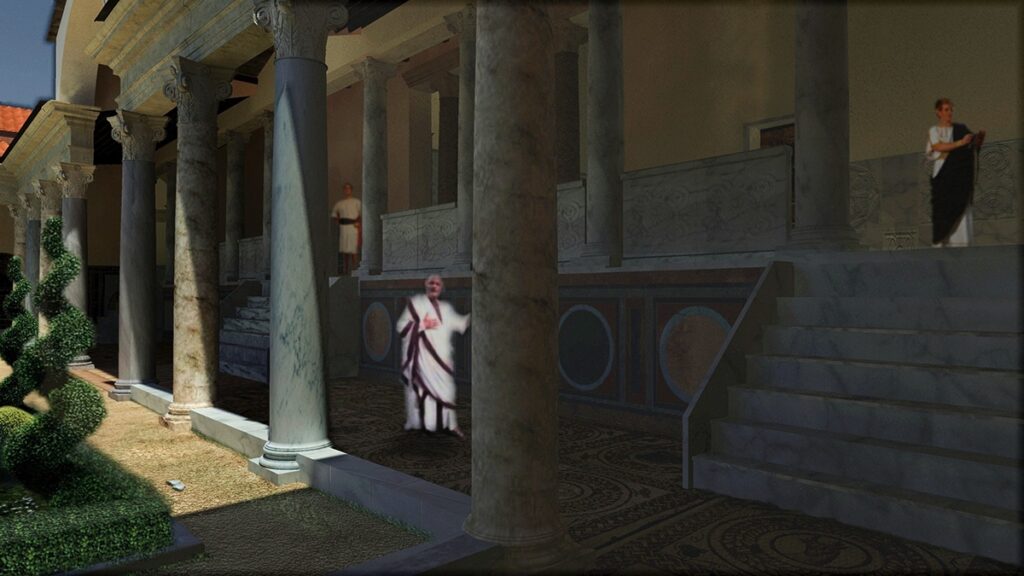Small or large, the peristyle is a typological characteristic, common and constant, for all Roman
domus
. The term peristyle indicates a courtyard, surrounded by a covered portico, usually with a pitched roof, into which the various rooms of the house faced.
 In the simplest urban domus, the peristyle was the internal atrium and the portico was made up of wooden pillars and beams. The portico served as a hallway between the various rooms and formed the core of the house. The courtyard was usually paved and sometimes had a small central fountain.
In the simplest urban domus, the peristyle was the internal atrium and the portico was made up of wooden pillars and beams. The portico served as a hallway between the various rooms and formed the core of the house. The courtyard was usually paved and sometimes had a small central fountain.
In larger domus, the peristyle was distinct from the hortus, another open space for the cultivation of vegetables, and in the peristyle there was a viridarium, a garden cultivated with flowers or small trees decorated with
topiary art
.
 In villas, the peristyle was surrounded by a colonnaded portico and also acted as a meeting place for public/private use; its size and wealth of decorations was commensurate with the importance of the owner, according to
Vitruvius
In villas, the peristyle was surrounded by a colonnaded portico and also acted as a meeting place for public/private use; its size and wealth of decorations was commensurate with the importance of the owner, according to
Vitruvius
’ indications in
De architectura
.
